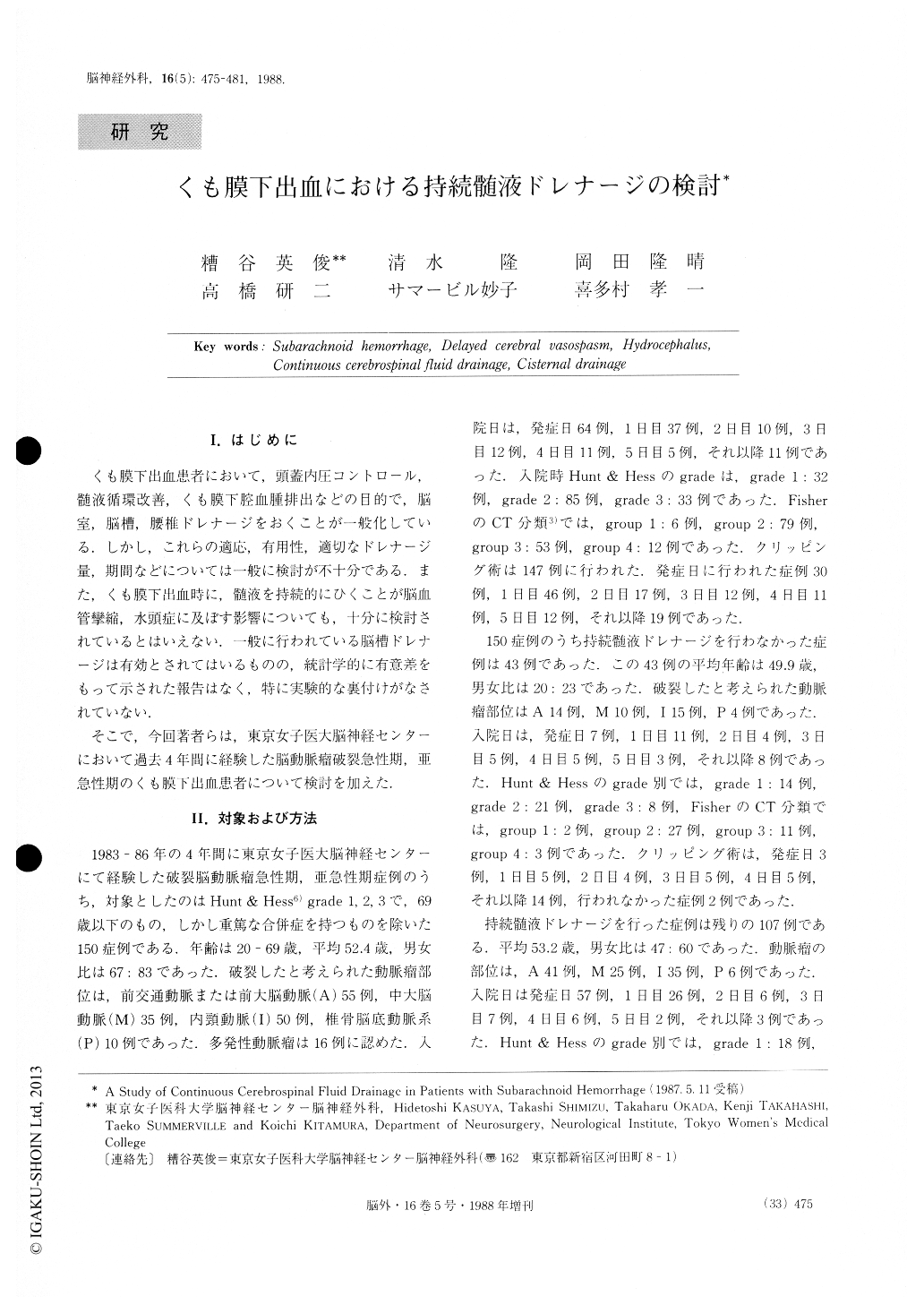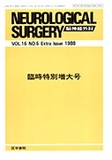Japanese
English
- 有料閲覧
- Abstract 文献概要
- 1ページ目 Look Inside
I.はじめに
くも膜下出血患者において,頭蓋内圧コントロール,髄液循環改善,くも膜下腔血腫排出などの目的で,脳室,脳槽,腰椎ドレナージをおくことが一般化している.しかし,これらの適応,有用性,適切なドレナージ量,期間などについては一般に検討が不十分である.また,くも膜下出血時に,髄液を持続的にひくことが脳血管攣縮,水頭症に及ぼす影響についても,十分に検討されているとはいえない.一般に行われている脳槽ドレナージは有効とされてはいるものの,統計学的に有意差をもって示された報告はなく,特に実験的な裏付けがなされていない.
そこで,今回著者らは,東京女子医大脳神経センターにおいて過去4年間に経験した脳動脈瘤破裂急性期,亜急性期のくも膜下出血患者について検討を加えた.
The influences of continuous cerebrospinal fluid (CSF) drainage on vasospasm and hydrocephalus were analyzed retrospectively in 150 patients with subarachnoid hemorrhage (SAH) due to ruptured intracranial aneurysms (32 cases of grade 1, 85 cases of grade 2, and 33 cases of grade 3 by the Hunt and Hess classification). One hundred and seven of these cases received CSF drainage (cisternal, ventricular, lumbar, or a combination of these). The volume of CSF drainage within the first week after onset was 975±513 ml (mean±SD). The total volume of CSF drainage was 2063±1635 ml (mean±SD) .

Copyright © 1988, Igaku-Shoin Ltd. All rights reserved.


